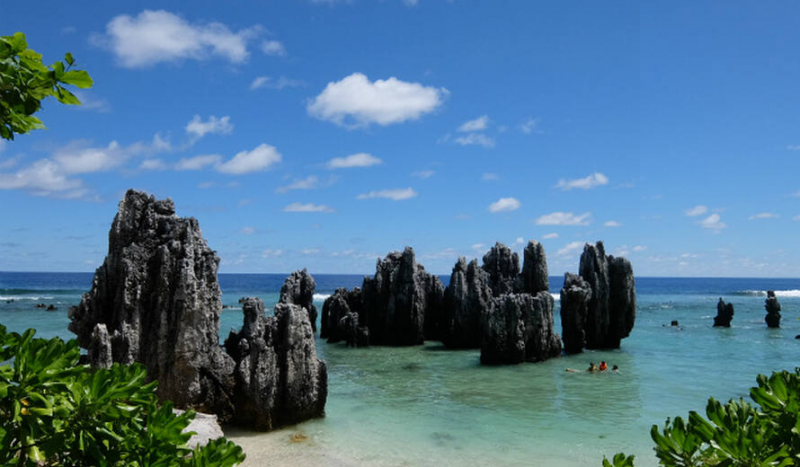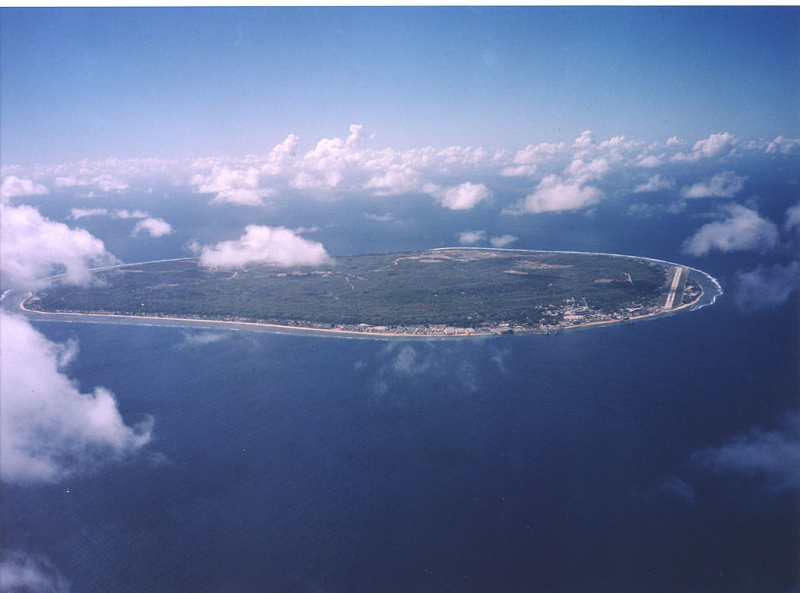Nauru
Nauru is a 21-square-kilometer (8.1-square-mile) oval-shaped island in the southwestern Pacific Ocean, 55.95 kilometers (34.77 miles) south of the equator. The island is surrounded by a coral reef that is visible at low tide and is dotted with pinnacles. The presence of the reef has prevented the establishment of a seaport, through channels in the reef provide access to the island for small boats. Inland from the beach is a fertile coastal strip 150 to 300 m (490 to 980 ft) wide.
Nauru's central plateau is surrounded by coral cliffs. The plateau's highest point, known as the Command Ridge, is 71 meters (233 feet) above sea level. Nauru's only fertile areas are along its narrow coastal belt, where coconut palms thrive. Bananas, pineapples, vegetables, pandanus trees, and indigenous hardwoods such as the tamanu tree grow on the land surrounding Buada Lagoon. Nauru was one of three great phosphate rock islands in the Pacific Ocean, the others being Kiribati's Banaba (Ocean Island) and French Polynesia's Makatea. Nauru's phosphate reserves are now almost completely depleted. Phosphate mining on the central plateau has left a barren landscape of jagged limestone pinnacles up to 15 meters (49 feet) tall. Mining has stripped and devastated approximately 80% of Nauru's land area, rendering it uninhabitable, as well as the surrounding exclusive economic zone; silt and phosphate runoff is estimated to have killed 40% of marine life. In Nauru, there are few natural sources of fresh water. Rainwater is collected in rooftop storage tanks. The islanders rely heavily on three desalination plants operated by Nauru's Utilities Agency.
Nauru is a small island with a rich history and hospitable people. The island with the fewest people is rich in natural beauty and breathtaking views. Some of the island's highlights include deep-sea fishing, green cliffs, shipwrecks, mining infrastructure remnants, scuba diving, fascinating animals and plant species, and tropical weather.
Location: southeastern Federated States of Micronesia.









